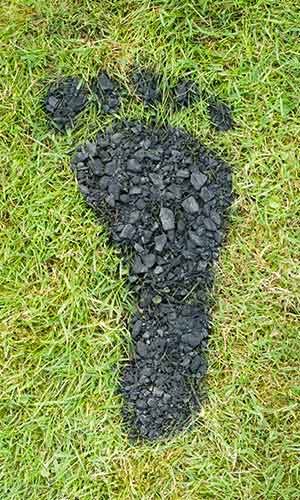If I am looking for an answer in euros or dollars this might be a fairly easy question - once I have decided which country and supermarket chain. But, what if I am looking for an answer represented in grams of carbon dioxide (CO2)?
Working out the cost of a product in grams of CO2 is known as calculating its carbon footprint. This is a useful measure as it can help give us an idea of how our actions, and in particular our consumption patterns, affect the amount of greenhouse gases in the atmosphere.
As CO2 and other greenhouse gases contribute to climate change, choosing products with a low carbon footprint over their carbon-greedy cousins is one of the ways in which a consumer can make a difference.

What's in a footprint?
But, how do we calculate a carbon footprint? What do we include? And as a consumer, how do I know I can trust what manufacturers are telling me?
Take, for example, a bottle of shampoo. Do I include the greenhouse gases involved in the production of the plastic packaging, the plastic film used to wrap the bottles when they're transported on the pallet, the ingredients in the shampoo itself, and even the energy used to heat the water for the shower?
Results for the carbon footprint will vary widely depending on what is included when making the calculations and the method used, meaning that you could end up with almost any number for your strawberries or steak. And, even when we do have a final figure, how should we communicate this to the consumer?
Looking for clarity
This uncertainty was the motivation behind the development of a new international technical specification ISO/TS 14067.
"Calculating the carbon footprint of a product is an incredibly complex task but it is important that the results can be trusted, especially for the consumer," explained José Alcorta, the ISO contact for the team of experts that developed the technical specification.
"Carbon footprint measurements are an increasingly popular way for companies to differentiate their products in the marketplace, so how to communicate these values to consumers becomes particularly important," he added.
"This is why experts from around the world decided to develop principles, requirements and guidelines for the quantification and communication of the carbon footprint of a product. ISO/TS 14067 will help companies calculate the carbon footprint of their products and communicate these numbers in an open and honest way to their consumers" he said.
ISO/TS 14067 is available from the ISO store as well as all ISO members.
